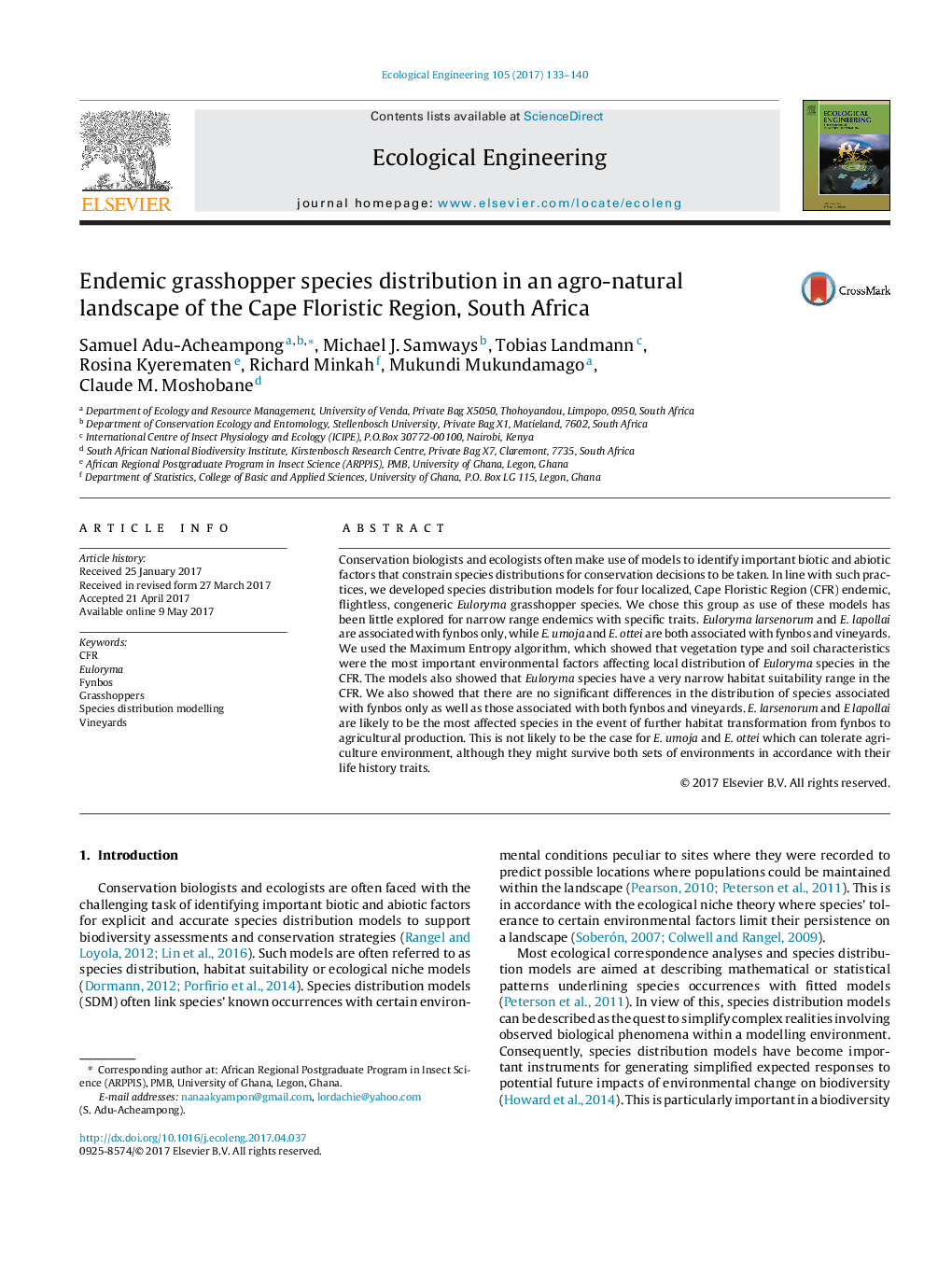| Article ID | Journal | Published Year | Pages | File Type |
|---|---|---|---|---|
| 5743606 | Ecological Engineering | 2017 | 8 Pages |
â¢Species distribution models were used to find out the geographic range and environmental variables that determine the distribution of endemic grasshopper species in the CFR.â¢The algorithm used for this modelling was the Maximum Entropy.â¢Vegetation type and soil characteristics were the most important variables that determined the distribution of this endemic grasshopper genus.â¢The model also showed that Euloryma species have a very narrow habitat suitability range.
Conservation biologists and ecologists often make use of models to identify important biotic and abiotic factors that constrain species distributions for conservation decisions to be taken. In line with such practices, we developed species distribution models for four localized, Cape Floristic Region (CFR) endemic, flightless, congeneric Euloryma grasshopper species. We chose this group as use of these models has been little explored for narrow range endemics with specific traits. Euloryma larsenorum and E. lapollai are associated with fynbos only, while E. umoja and E. ottei are both associated with fynbos and vineyards. We used the Maximum Entropy algorithm, which showed that vegetation type and soil characteristics were the most important environmental factors affecting local distribution of Euloryma species in the CFR. The models also showed that Euloryma species have a very narrow habitat suitability range in the CFR. We also showed that there are no significant differences in the distribution of species associated with fynbos only as well as those associated with both fynbos and vineyards. E. larsenorum and E lapollai are likely to be the most affected species in the event of further habitat transformation from fynbos to agricultural production. This is not likely to be the case for E. umoja and E. ottei which can tolerate agriculture environment, although they might survive both sets of environments in accordance with their life history traits.
Graphical abstractDownload high-res image (109KB)Download full-size image
